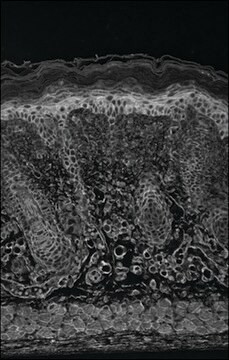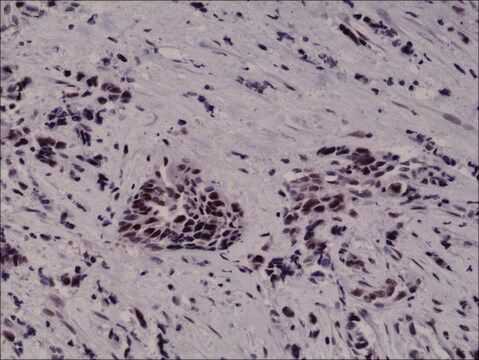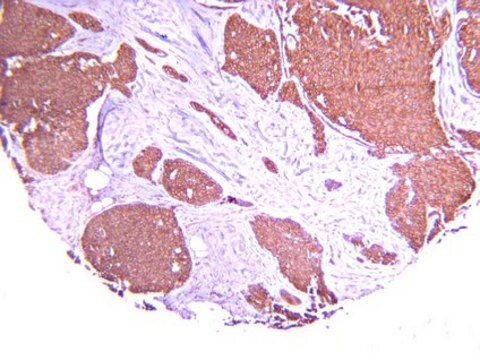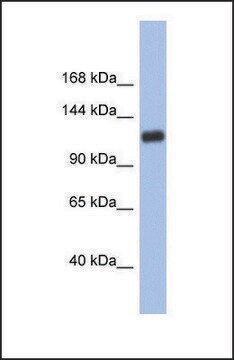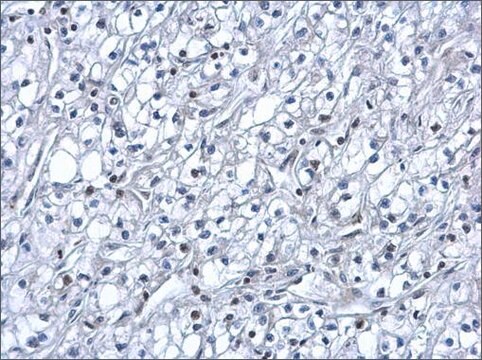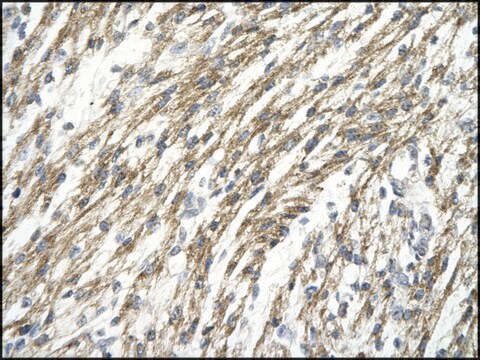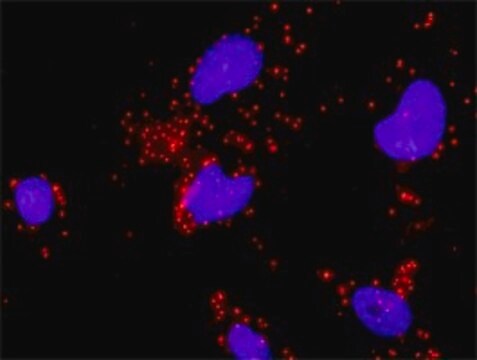H6536
Monoclonal Anti-HIF-1α antibody produced in mouse
~1 mg/mL, clone H1α67, purified immunoglobulin, buffered aqueous solution
Synonym(s):
Anti-Hypoxia Inducible Factor 1, α subunit
About This Item
Recommended Products
biological source
mouse
Quality Level
conjugate
unconjugated
antibody form
purified immunoglobulin
antibody product type
primary antibodies
clone
H1α67, monoclonal
form
buffered aqueous solution
mol wt
antigen 120 kDa
species reactivity
rat, sheep, ferret, human, mouse
concentration
~1 mg/mL
technique(s)
immunohistochemistry (formalin-fixed, paraffin-embedded sections): 1:500-1:1,000 using antigen retrieval
immunoprecipitation (IP): suitable
western blot: 1:500-1:1,000
isotype
IgG2b
UniProt accession no.
shipped in
wet ice
storage temp.
−20°C
target post-translational modification
unmodified
Gene Information
human ... HIF1A(3091)
mouse ... Hif1a(15251)
rat ... Hif1a(29560)
General description
Immunogen
Application
Immunohistochemistry (1 paper)
Physical form
Disclaimer
Not finding the right product?
Try our Product Selector Tool.
Storage Class
10 - Combustible liquids
wgk_germany
nwg
flash_point_f
Not applicable
flash_point_c
Not applicable
Choose from one of the most recent versions:
Already Own This Product?
Find documentation for the products that you have recently purchased in the Document Library.
Customers Also Viewed
Our team of scientists has experience in all areas of research including Life Science, Material Science, Chemical Synthesis, Chromatography, Analytical and many others.
Contact Technical Service